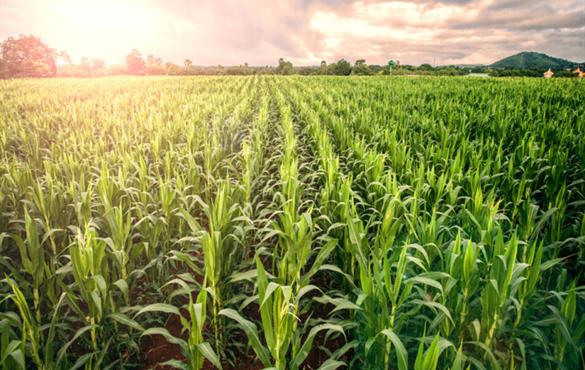Machine learning used for helping farmers select optimal products suited for their operation
Washington University in St. Louis, in partnership with The Climate Corporation, a subsidiary of Bayer, are working to explore unique new technologies to advance the science behind hybrid selection and placement

Roman Garnett is working with The Climate Corporation to apply active machine learning to help determine which hybrids will give the highest yield.
For years, farmers have been selecting products for their operation through the best advice available — seed guides, local agronomists, seed dealers, etc. The advancements in Artificial Intelligence technologies have presented opportunities to explore a different approach.
Washington University in St. Louis in partnership with The Climate Corporation, a subsidiary of Bayer, are working to explore unique new technologies to advance the science behind hybrid selection & placement.
Roman Garnett, assistant professor of Computer Science & Engineering in the School of Engineering & Applied Science, has received a $97,771 grant from The Climate Corporation to apply active machine learning to help determine which hybrids have the probability of achieving maximum yield potential in every environment.
Developing commercial hybrid products is a long and expensive process; it can take 7-8 years to determine how well the seeds grew, their resistance to pests and disease, and associated crop yields. "By incorporating active machine learning, we can create a model that would offer a potential reduction in the footprint required for product characterization & commercialization and also provide valuable insights on predicted product deployment targets," said Xiao Yang, Placement Advisement Lead at The Climate Corporation.
"People talk about personalized medicine, and this is personalized agriculture," Garnett said. "We can gather a lot of data, then use the data to try to learn patterns to be able to make personalized recommendations for each farmer."
The goal of the project is to determine if climate scientists can streamline the development and planting of new products each year.
Active machine learning identifies the data most useful toward the end goal. Instead of using existing data, active machine learning "learns along the way," Garnett said.
"Instead of collecting all this data, what if we had only collected 10 percent of it, but we get to choose which 10 percent," Garnett said. "Then we will have an algorithm that could have used a small fraction of the data to be able to get as good a personalization performance for this seed portfolio. We're doing it in simulation, but if it works, we might be able to influence the way they make future decisions."
Garnett is on a research team that is using big data to accelerate breeding and the commercial release of sorghum crops that can be used as a renewable energy source. The four-year, $8 million project, headed by the Donald Danforth Plant Science Center, is funded by the U.S. Department of Energy's ARPA-E TERRA program and includes a team of 10 university, government and industry collaborators. Garnett is developing algorithms that make the most effective use of statistical estimates of the final biomass of the crops from sensor data as early in the growing season as possible to speed the breeding process.




